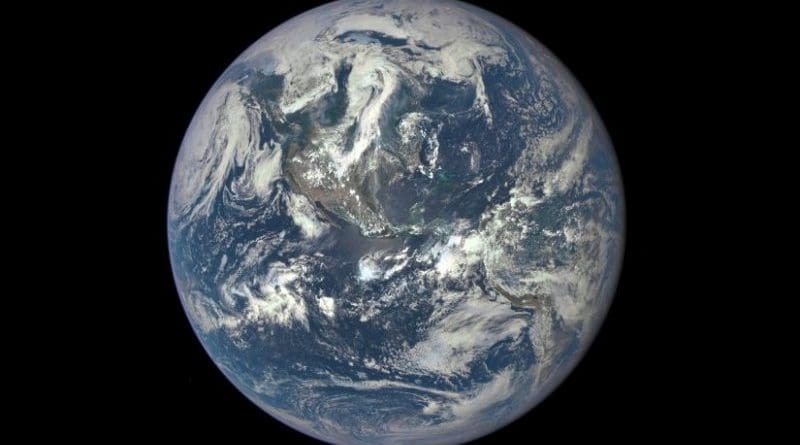Earth’s Carrying Capacity Strained By Population Growth – OpEd
Earth’s renewable resources and carrying capacity is being severely strained to “support with some degree and comfort and individual choice” the world’s human population.
This is due to an overrun of fertility rates since 2000, that caused a global population swell feared to reach 10 billion before 2050, the US Council on Environmental Quality and the State Department said in a three-year study called ”Reconnaissance of the Future Global 2000”.
“The declines in carrying capacity, already evident in scattered areas around the world point to a phenomenon that is fast spreading”, notes the study.
“Unless nations collectively and individually take bold and imaginative steps toward improved environmental, social and economic conditions, reduced fertility, better management of resources and better protection of the environment, the world will expect trouble most of the 21st century”, warns the study.
Grim Outlook
As excerpted by the Population Reference Bureau in its Intercom publication, “Global 2000” rather gives a grim outlook for the world in this century.
The study details some of the consequences should global population trends continue unchanged in this century this wise:
- Extinction of at least 500,000 plant and animal species by 2050.
- A 40 percent slash in all remaining forests in the less developed countries and loss of several inches of topsoil from croplands the world over.
- Much less arable land per person, only one quarter hectare on the average from the four fifths of a hectare.
- More than half of the world’s 2 billion barrels of original petroleum reserved resources will already be consumed.
- Upsurge in prices of vital resources over the inflation level.
- Declines in per capita water supply by 35 to 47 percent.
- Four fifths of the world population will live in less developed countries.
- Widening gap between the richest and the poorest with great disparities within countries.
- More deaths from hunger and diseases especially among babies and young children and more mentally and physically-handicapped cases among those surviving infancy.
The most troubling of these outcomes is the drop of productivity of Earth’s renewable resources, according to the study.
Technological Advances Will Not Stop the Inevitable
And more troubling, the study suggests, is that even allowing the technological developments and adoptions, the world’s human population will only be within a few generations of reaching the entire Earth’s carrying capacity.
So what are the chances of stemming the tide and averting the consequences?
Not too good.
As the study bares, there is no silver bullet. “There are no quick or easy solutions, particularly in countries and regions where population pressure is already leading to a reduction of the carrying capacity of the land.”
The assessment stems from observations that living conditions spawned by population-induced environmental deterioration render more difficult reduction of fertility to replacement level (at which the population of a country stops growing).
Some Nations Will be Hard Up in Feeding their Population
As the grim scenario looms, the UN Food and Agriculture Organization (UNFAO) bared that at least 28 developing countries would not be able to feed their respective countries by the middle of the century because yields will be adversely affected by climate change and genetic erosion.
Four of the 28 countries are in Asia—Philippines, Bhutan, Sri Lanka, Vietnam. Seven in Latin America—Jamaica, Bahamas, Trinidad and Tobago, Dominican Republic, Guadeloupe, Windward Isles, Guatemala; 17 in Africa—Tunisia, Morocco, Zimbabwe, Botswana, Senegal, Sierra Leone, Swaziland, Benin, Upper Volta, Togo, Mali, Malawi, Namibia, Comoros Isles, Ethiopia, Nigeria Uganda.
The reasons, UNFAO said are inferior planting seeds and genetic resources, increasing desertification, prolonged droughts and diminishing water supply, deteriorating soil quality and global warming.
Loss of Genetic Resources
Biorich areas in the world responsible for food and medical genes important to humanity face erosion most critically in this century, the US Council of Environmental Quality report stresses. As such, these regions holding potential genetic properties of plants or animals that can be used to develop better varieties of crops in farming or develop better livestock, need priority conservation efforts if the world is to tame the population boom.
Genetic diversity is being lost as species are becoming extinct; pharmacists are losing raw materials from which new drugs are developed; agricultural scientists are losing wild relatives of crop plants that can ensure more productive or pest and disease-tolerant food crops, and; wild animal breeds are being lost which could have improved farm animal breeding.
In its September 2018 report, the Swiss-based International Union for the Conservation of Nature (IUCN), the world’s watchdog of flora and fauna, said an additional 27,000 species are in danger of becoming extinct.
Of the number, 41 percent are amphibians, 5 percent mammals, 34 percent conifers, 13 percent birds, 31 percent sharks and manta rays, 33 percent corals, and 27 percent selected crustaceans.
Wild species are building blocks for the betterment of human life but their loss can mean loss of mankind. The study suggests one way humans may evade the inevitable is by going back to the way of traditional communities.
“Indigenous peoples or ‘Ecosystem people’ value biodiversity as a part of their livelihood as well as through cultural and religious sentiments. A great variety of crops have been cultivated in traditional agricultural systems and this permitted a wide range of produce to be grown and marketed throughout the year and acted as an insurance against the failure of one crop. In recent years farmers have begun to receive economic incentives to grow cash crops for national or international markets,” the study reminds.
It may be well to learn from them.

